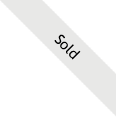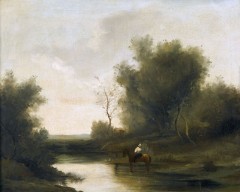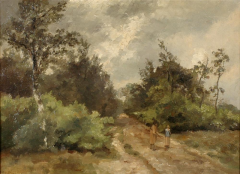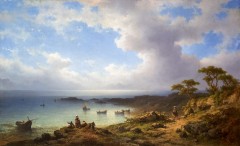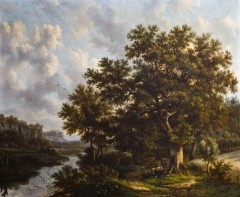A Dance Party with Tea
013549 Wilhelm SCHREUER [1866 - 1933] A Tea Dance Party
oil on paper laid on canvas, 59,7 x 80 cm, signed l.l.: "WS"
Wilhelm Schreuer [28.09.1866 - 11.11.1933] was born in Wesel, in the region of Lower Rhine. In 1872, shortly before attending school, Schreuer moved to Cologne with his parents. Encouraged by his father, Wilhelm attempted painting since an early age. In 1884 the painter entered the Academy of Fine Arts in Düsseldorf and began studies in the atelier of Heinrich Lauenstein, which he later continued in the studio of Hugo Carol. Between 1886 and 1890 he studied under Peter Jenssen – a rector of the Academy in Dusseldorf at the time. At the age of 33 he married Maria Pauly, a daughter of an art dealer – Leo Pauly.
Schreuer gained recognition quite early in his life. In 1913 Artists Society in Hamburg organized an exhibition, showing the most significant works of artists from four cities: Berlin, Hamburg, Munich and Düsseldorf, and invited Schreuer to participate in the event. The artworks he displayed presented a wide range of subjects such as: images of Rhine in the area of Cologne, reminiscences from Italy and Bavaria, musical themes, scenes inspired by rococo style, and motifs taken from the repertoire of Dutch painting. In 1906 the Wallraf-Richartz Museum had bought a painting entitled Shrove Thursday in Cologne, which is still exhibited in the City Museum. Schreuer was taking part in an important, international art exhibitions in Düsseldorf and Cologne up to 1920s. Works from that time including: Portrait of Frederic II, King of Prussia, Goethe at the Jacobins in Düsseldorf, Courtyard, Farm, Magdalene. In the anniversary of his death in 1934 The Art Society of Rhine-Westphalia organized a retrospective exhibition of his works.
Schreuer’s painting is characterized by soft colours and paint applied directly on moist ground, usually on a cardboard. This technique required great technical skills, since broader corrections were hardly possible. Schreuer’s paintings have a smooth surface with each brush stroke clearly visible. The artist favoured limited colour palette. Most of his artwork is almost monochromatic, with examples executed in an en grisaille technique, what, in combination with a delicate lightening, resembles the works of Old Masters.
The themes frequently encountered in Schreuer’s works included mainly scenes related with music and dance as well as cityscapes and images of ships sailing on the river Rhine.
The artworks of Wilhelm Schreuer, one of the representatives of the Düsseldorf School, are housed in the museum collections in Cologne, Düsseldorf, and in private galleries.


